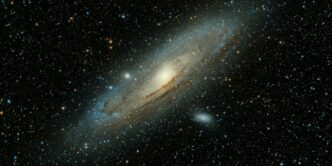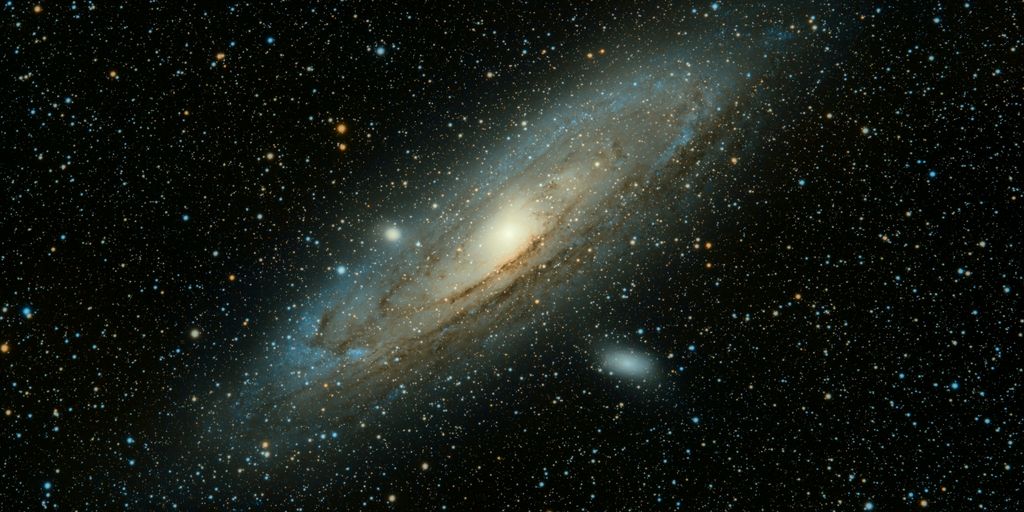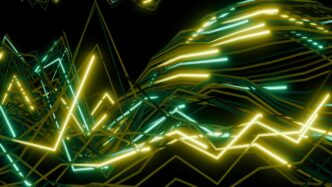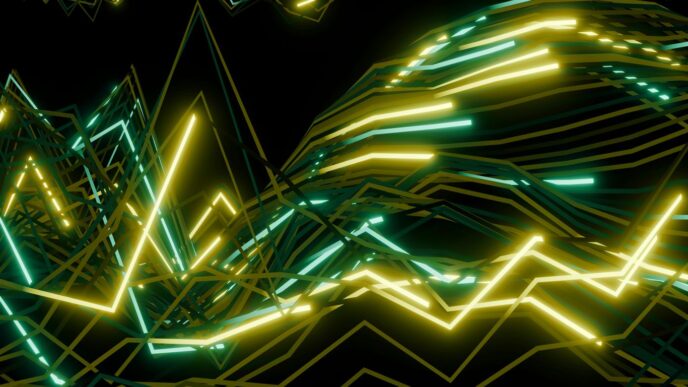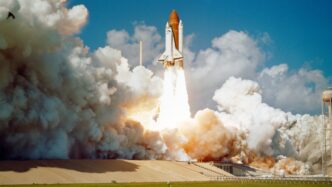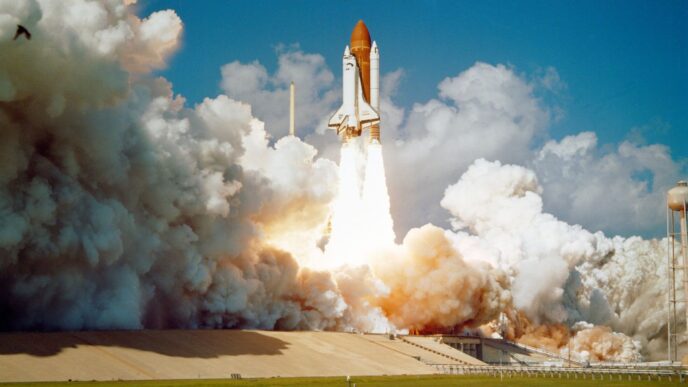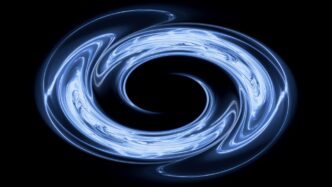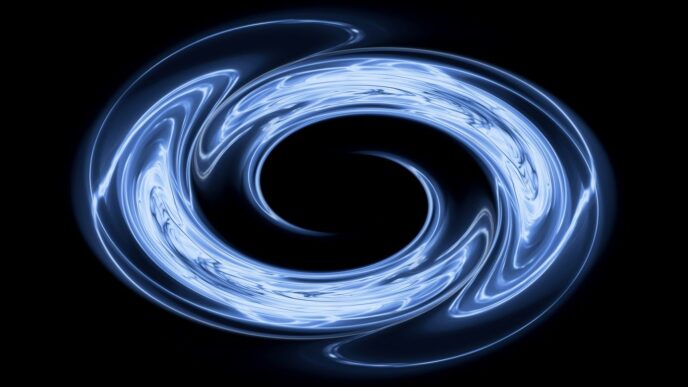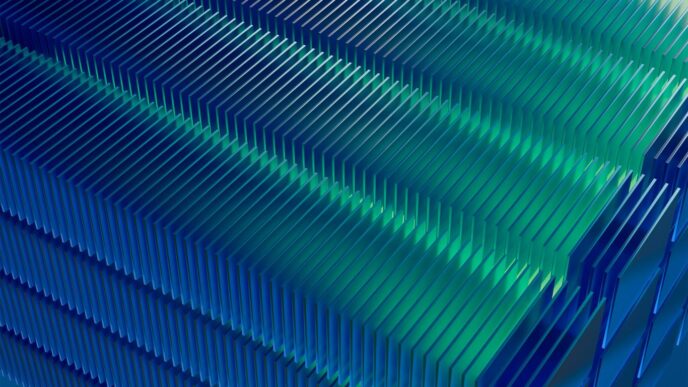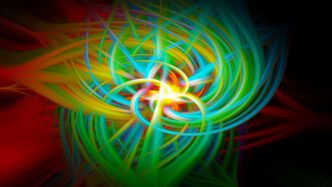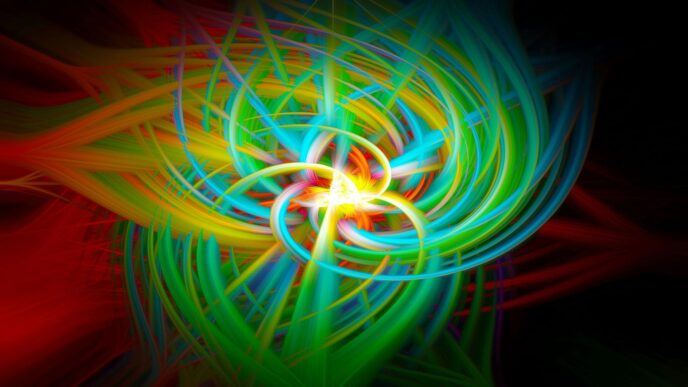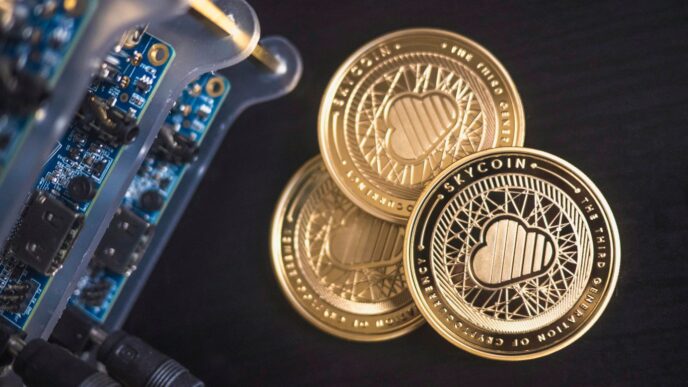Our solar system is a pretty wild place, full of amazing stuff. From the giant Sun to the tiny rocks floating around, there’s always something new to learn. We’ve put together 10 interesting facts about the solar system that might just surprise you. Get ready to explore our cosmic neighborhood!
Key Takeaways
- The Sun is way bigger than you think, holding everything together.
- Our solar system has a bunch of planets, each with its own special features.
- Moons aren’t just for Earth; lots of planets have them, and some are really weird.
- Asteroids and comets are like cosmic leftover bits, and they tell us a lot about the past.
- Even ‘dwarf planets’ like Pluto have interesting stories, even if they’re not full-blown planets anymore.
1. Sun
Okay, let’s kick things off with the big cheese of our solar system – the Sun! It’s easy to take it for granted, but this star is seriously fascinating. I mean, without it, we wouldn’t even be here, right?
First off, the Sun is HUGE. It’s got about 330,000 times the mass of Earth. That’s just mind-boggling. And get this: it makes up over 99% of the solar system’s total mass. Everything else is just crumbs compared to this giant ball of gas.
Speaking of gas, the Sun is mostly hydrogen and helium. Deep inside, it’s constantly doing nuclear fusion, which is basically smashing hydrogen atoms together to make helium. This process releases a crazy amount of energy – that’s where all the light and heat come from. It’s like a giant, never-ending fusion reaction happening up there.
Here are some quick facts:
- The Sun loses about a billion kilograms of matter every second due to the solar wind. That sounds like a lot, but it’s actually a tiny fraction of its total mass.
- The Sun’s surface temperature is around 10,000 degrees Fahrenheit (5,500 degrees Celsius). But the corona, the outer atmosphere, is way hotter – millions of degrees! Scientists are still trying to figure out why.
- Unlike many stars, the Sun is a single star. Over half of Sun-like stars in the Milky Way are in multiple star systems. It formed about 4.6 billion years ago from a giant molecular cloud.
So, yeah, the Sun is pretty awesome. It’s not just a big, bright light in the sky; it’s a complex, dynamic, and essential part of our solar system. It’s wild to think about all the stuff happening on and around it all the time.
2. Planets
Okay, so everyone knows about the planets, right? But there’s always more to learn! It’s easy to think of them as just big balls of rock or gas, but each one is seriously unique. I mean, think about it – from scorching hot Venus to icy Neptune, it’s a wild range of environments.
- Earth is the only known planet with liquid water on its surface, which is pretty important for, you know, life.
- Neptune is super far away. It takes Neptune about 165 Earth years to make just one orbit around the Sun. That’s a long time!
- Some planets don’t even hang around stars. They’re called rogue planets, and they just drift through space. Imagine being on one of those!
And speaking of variety, check out this quick rundown:
| Planet | Fun Fact SkyActiv Technology [8724] is pretty cool, right?
3. Moons
Okay, so moons. Everyone knows Earth has one, but did you know some planets have dozens? It’s kinda wild to think about. They’re not all just boring rocks either; some are super weird and interesting.
- Moons come in all shapes and sizes. Some are tiny, like just a few miles across, while others are bigger than some planets! Ganymede, one of Jupiter’s moons, is actually larger than Mercury. Crazy, right?
- A lot of moons are tidally locked, meaning one side always faces their planet. Our own Moon is like that. It’s why we only ever see one side of it from Earth. The far side remained a mystery for a long time. It’s less explored, but still fascinating.
- Some moons have atmospheres, and even liquid on their surfaces. Titan, a moon of Saturn, is the only moon in the solar system with a thick atmosphere and lakes of liquid methane and ethane. Imagine that! Not exactly a place you’d want to go swimming.
Jupiter is the king of moons. It has at least 79 known moons! The four largest are called the Galilean moons, named after Galileo Galilei, who discovered them. Io, another of Jupiter’s moons, is the most volcanically active body in the solar system. Check out altcoins to monitor this summer.
Neptune’s largest moon, Triton, is also pretty strange. It orbits the planet in the opposite direction of Neptune’s rotation, which is pretty unusual. Scientists think it might be a captured object from the Kuiper Belt.
4. Asteroids
Okay, so asteroids. They’re basically space rocks, but there’s more to it than that. I always thought they were just floating around randomly, but they mostly hang out in a specific area. It’s like a cosmic hangout spot.
Most asteroids are found in the asteroid belt, located between Mars and Jupiter. It’s a pretty crowded place, relatively speaking, but still mostly empty space. Think of it like a really, really spread-out rock collection.
Here are some things I find interesting about asteroids:
- They’re leftovers from when the solar system was forming. So, they’re like time capsules from billions of years ago.
- Some asteroids have moons! Can you imagine? A rock with its own little rock buddy.
- Scientists study asteroids to learn about the early solar system. It’s like reading the solar system’s diary.
And here’s a little table with some asteroid facts:
| Fact | Details
5. Comets
Okay, so comets are like the dirty snowballs of space. They’re these icy bodies that hang out in the outer solar system, and sometimes, they decide to take a trip closer to the Sun. When they do, things get interesting.
- Comets are mostly made of ice, dust, and small rocky particles. Think of them as leftovers from when the solar system was forming.
- As a comet approaches the Sun, the heat causes its ice to turn into gas, creating a cloud around it called a coma. This coma can get HUGE, sometimes bigger than a planet!
- The solar wind pushes some of the gas and dust away from the comet, forming those beautiful tails we see. A comet actually has two tails: a dust tail and an ion tail. The dust tail is curved and the ion tail is straight, pointing directly away from the Sun.
One of the most famous comets is Halley’s Comet, which swings by Earth every 76 years. It’s like a cosmic celebrity!
Most comets chill way out in the Oort cloud, a vast, spherical region way beyond Pluto. Some comets come from the Kuiper Belt, which is a bit closer in.
Comets are pretty cool because they give us clues about the early solar system. Scientists study their composition to learn more about what things were like way back when. Plus, they’re just awesome to look at! Speaking of looking, many comets are spotted using a sun-gazing telescope.
6. Dwarf Planets
So, dwarf planets! These guys are super interesting because they’re kind of in-between planets and asteroids. They orbit the Sun, aren’t moons, and haven’t cleared their orbital neighborhood of other objects. That last part is the key difference between them and the eight official planets. It’s what got Pluto reclassified, sparking some serious debate back in 2006.
Dwarf planets are fascinating celestial bodies that share characteristics with planets but don’t quite meet all the criteria.
Think of them as the rebels of the solar system, not quite fitting in but still doing their own thing.
- They have enough gravity to pull themselves into a nearly round shape.
- They haven’t cleared their orbit of other similarly sized objects.
- Many reside in the Kuiper Belt, a region beyond Neptune.
Ceres is another dwarf planet, and it lives in the asteroid belt between Mars and Jupiter. It’s actually the largest object in that whole area. Eris is about the same size as Pluto and also chills out in the Kuiper Belt. These icy bodies are pretty far out there. Neptune was actually discovered through math before anyone even saw it, which is pretty wild. And speaking of Neptune, it takes 165 Earth years for it to orbit the Sun. That’s a long time!
7. Pluto

Okay, so Pluto. It’s not a planet anymore, but it’s still super interesting! I remember when I was a kid, it was always included in the list of planets, and then BAM, it got demoted. It’s now officially a dwarf planet, chilling out in the Kuiper Belt. But don’t feel too bad for it; it’s got some cool features that make it worth talking about.
One of the biggest surprises about Pluto came from the New Horizons mission. Before that, everyone thought it was just a boring, icy rock. But the images that New Horizons sent back in 2015? Mind-blowing. Turns out, Pluto has mountains, valleys, and even a heart-shaped glacier made of nitrogen ice! Who would have guessed?
- Pluto is tiny. Like, really tiny. It’s smaller than our Moon.
- It has a weird orbit. It’s not in the same plane as the other planets and is quite eccentric.
- Pluto has five moons. Charon is the biggest, and it’s so big that Pluto and Charon are sometimes considered a double dwarf planet system.
Pluto’s atmosphere is also pretty strange. It’s thin and mostly made of nitrogen, but it freezes and collapses onto the surface when Pluto is farthest from the Sun. Talk about dramatic!
It’s a bit sad that Pluto isn’t a planet anymore, but honestly, it’s way more interesting as a dwarf planet. It’s a reminder that the solar system is full of surprises, and there’s always something new to discover. Plus, it caused a lot of debate, and who doesn’t love a good scientific debate?
8. Mars

Mars, the "Red Planet," has always captured our imagination. I mean, who hasn’t dreamed of Mars colonization? It’s not just the color; it’s the possibility of life, past or present, that makes it so intriguing. We’ve sent rovers, orbiters, and landers to study it, and we’re still learning new things all the time.
- Mars has the largest volcano in the solar system, Olympus Mons. It’s a shield volcano, meaning it’s broad and gently sloping, and it’s absolutely massive. Imagine a volcano the size of Arizona!
- Mars also has Valles Marineris, a canyon system that makes the Grand Canyon look like a ditch. It stretches for thousands of kilometers and is incredibly deep.
- The Martian atmosphere is thin, mostly carbon dioxide, and the surface temperature is cold. Like, really cold. But there’s evidence of past liquid water, which is a big deal when you’re looking for signs of life.
It’s a pretty interesting place, and I’m excited to see what we discover next.
9. Neptune
Okay, so Neptune. It’s the eighth planet from the Sun, way out there. I always think of it as this mysterious, icy giant. It’s got a cool blue color, which comes from the methane in its atmosphere. It’s pretty far, so it takes a long time to orbit the sun. In fact, Neptune has only completed one orbit since its discovery.
- Neptune’s atmosphere is mainly hydrogen, helium, and methane, which gives it that awesome blue color.
- Neptune’s moon, Triton, has a thin atmosphere made mostly of nitrogen and shows cryovolcanism, with geysers erupting nitrogen gas and icy particles. That’s wild!
- The Kuiper Belt, a region beyond Neptune, is home to tons of icy bodies and dwarf planets. It’s like a cosmic storage unit out there.
And get this, Neptune has some seriously strong winds. Like, 1,500 miles per hour strong. That makes it one of the windiest planets in our solar system. Can you imagine trying to fly a kite there? Forget about it!
Neptune also has a magnetosphere, like other planets. These regions surround planets, pulsars and even our Galaxy. Jupiter has the largest magnetosphere in our Solar System. It’s huge!
10. Saturn
Okay, so Saturn. Everyone knows Saturn because of its rings, right? But there’s so much more to it than just being the ‘ringed planet.’ It’s a gas giant, meaning it doesn’t have a solid surface like Earth. Imagine trying to stand on it – you’d just sink! It’s mostly made of hydrogen and helium, similar to Jupiter.
One thing that always blows my mind is how fast Saturn spins. A day on Saturn is only about 10.7 Earth hours. That’s crazy fast! But because it’s so big, a year on Saturn is equal to about 29 Earth years. So, if you lived on Saturn, you’d barely have any birthdays.
Saturn’s rings are not solid; they’re made up of billions of ice particles, rocks, and dust. These particles range in size from tiny grains to chunks as big as houses. What’s even cooler is that these rings are incredibly thin compared to their width. If you could somehow stand next to them, they’d look like a super-thin CD.
Saturn also has a ton of moons – like, a lot. As of my last check, it has 83 confirmed moons. Titan is the biggest and most interesting. It’s the only moon in our solar system with a thick atmosphere, and it even has lakes and rivers of liquid methane and ethane. Imagine that as a vacation spot!
Here’s a quick rundown of some key facts:
- Diameter: About 72,367 miles (116,460 kilometers)
- Distance from the Sun: Around 886 million miles (1.4 billion kilometers)
- Atmosphere: Mostly hydrogen and helium
- Notable Moons: Titan, Enceladus, Mimas
Speaking of moons, Enceladus is another fascinating one. Scientists have found evidence of a subsurface ocean and cryovolcanoes that shoot water vapor and ice particles into space. This makes Enceladus a potential place to look for life beyond Earth. Who knows what we might find there?
| Feature | Description |
|---|---|
| Ring Composition | Ice particles, rocks, dust |
| Atmosphere | Primarily hydrogen and helium |
| Rotation Period | Approximately 10.7 Earth hours |
| Orbital Period | About 29 Earth years |
| Number of Moons | 83 |
So, next time you look at a picture of Saturn, remember it’s not just about the pretty rings. It’s a whole complex system with crazy weather, fascinating moons, and a whole lot of mysteries waiting to be uncovered. It’s a great example of the wonders of the solar system, and you can learn more about cloud hosting to support space exploration efforts.
Wrapping Up Our Cosmic Trip
So, we’ve taken a quick look at some cool stuff about our solar system. It’s pretty wild to think about all the amazing things out there, right? From crazy storms on other planets to how everything just hangs together because of gravity, there’s always something new to learn. It really makes you think about how small we are and how much more there is to see. Keep looking up!
Frequently Asked Questions
What exactly is the solar system?
Our solar system is like a big neighborhood in space. It includes our Sun, all the planets that orbit it (like Earth, Mars, and Jupiter), their moons, and lots of other space rocks like asteroids and comets. Everything in our solar system is held together by the Sun’s strong pull, called gravity.
What is the Sun, and why is it so important?
The Sun is at the very center of our solar system. It’s a giant ball of super hot, glowing gas, mostly made of hydrogen and helium. The Sun is incredibly important because it gives us light and heat, which makes life on Earth possible. Its huge size and gravity keep all the planets circling around it.
How many planets are in our solar system?
There are eight main planets in our solar system: Mercury, Venus, Earth, Mars, Jupiter, Saturn, Uranus, and Neptune. They all orbit the Sun, but each one is different in size, what it’s made of, and how far away it is from the Sun.
What are moons, and do all planets have them?
Moons are natural objects that orbit planets. Our Earth has one moon, but other planets, like Jupiter and Saturn, have many! These moons come in all shapes and sizes, and some of them, like Europa (one of Jupiter’s moons), might even have oceans hidden under their icy surfaces.
What’s the difference between asteroids and comets?
Asteroids are like big space rocks that orbit the Sun, mostly found in a region between Mars and Jupiter called the asteroid belt. Comets are different; they are icy bodies that, when they get close to the Sun, warm up and release gas and dust, creating a bright tail that we can sometimes see from Earth.
What is a dwarf planet, and why is Pluto called one?
A dwarf planet is a celestial body that orbits the Sun, is nearly round, but hasn’t cleared its orbital path of other debris. Pluto is the most famous dwarf planet. It used to be considered a full planet, but scientists reclassified it because it shares its orbit with many other small objects.

